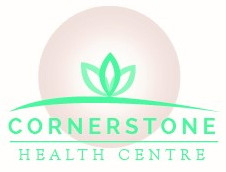Relieving Exercise for Georgetown Back Pain Relief
“Exercise? But my neck (or back) hurts!”
Dr. Butwell hears you! Dr. Butwell knows your back hurts. Many Georgetown chiropractic patients come for just that reason: Georgetown back pain. Back/Neck pain relief - whether due to Georgetown spinal stenosis or a Georgetown disc herniation whether it’s in the back/neck only or goes down the leg/arm and into the foot/hand - is possible via our joint effort: Georgetown chiropractic care including spinal manipulation and exercise.
Georgetown SPINAL STENOSIS AND LEG PAIN
Low back pain patients with spinal stenosis and leg pain have more fatty areas and less extensor muscles on MRI. What does that mean? There is a a loss of muscle power in the low back when pain is present. (1) One of the causes of low back pain is lumbar hyperlordosis (sway back). A type of therapeutic exercise known as Perez-Olmedo showed improvement in 60% of youths with hyperlordosis. (2) Dr. Butwell checks for such causes and has just the exercise to tackle the issue.
Georgetown NECK PAIN
Neck pain patients experience less neck pain and improved dysfunction neck posture and range of motion with thoracic spine manipulation. The relief lasts up to a half-year post-treatment. (3) This goes to show that spinal manipulation is an essential part in Georgetown pain relief treatment plans. Dr. Butwell is good at setting these up for our Georgetown chiropractic patients!
Georgetown BACK PAIN
Chronic low back pain patients with weak stomach muscles were cared for with abdominoplasty (a “tummy tuck”). This produces a spine-stabilizing effect by tightening the muscles increasing intraabdominal pressure and increasing the efficiency of these muscles to make them better spine stabilizers. Such abdominal strengthening should be considered as an option for patients with weak lower abdominal muscles and intractable low back pain who have not been helped by conservative management. (4) Dr. Butwell can recommend you some specific exercises that will do the trick before resorting to a surgery!
INTERMITTENT CLAUDICATION (cramp-like pain in the legs upon exercise like walking)
Peripheral artery disease patients with intermittent claudication were treated with a home-based exercise program a supervised exercise program and usual-care control. Both exercise programs had patients exercise with a step activity monitor for 12 weeks. The patients stuck with these programs which both proved effective in improving claudication measures similar to a standard supervised exercise program. Such exercise seems to be more effective in increasing daily activity in the community setting than supervised exercise. (5) If you are one of those Dr. Butwell is ready to be your community!
Georgetown NON-SPECIFIC LOW BACK PAIN
Persistent non-specific low back pain pushes some Georgetown back pain patients over the edge…with good reason! Dr. Butwell gets it! Compared with slight or other interventions Pilates is a good alternative to try to decrease back pain and ease disability. (7)
Georgetown POST-SURGICAL BACK PAIN
Even after back surgery, exercise helps. Aerobic exercise starting one month after first time single-level lumbar microdiscectomy brought about a more distinct functional improvement than home exercise. (8) Whatever it takes to help decrease back pain is the important factor. Listen in to a PODCAST that shares how Cox Technic helps relieve post-surgical back pain. Dr. Butwell will help you explore the best exercise option for you!
Schedule a Georgetown chiropractic appointment today to see how the Georgetown chiropractic care treatment plan with exercise will benefit you.

